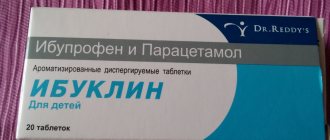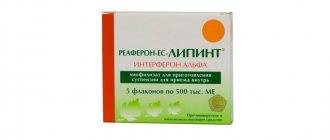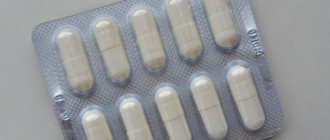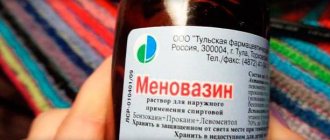Directions for use and dosage
Before administration begins, the sodium chloride solution must be heated to 36-38 degrees.
In case of dehydration, the dosage is determined individually. The average dose is 1 liter per day. If the patient is severely poisoned or there is a large loss of fluid, it is recommended to administer the solution up to 3 liters per day. In this case, a sodium chloride dropper is used. The product should be administered at a speed of 540 milliliters per hour.
Children who are found to be dehydrated, accompanied by a decrease in blood pressure, must be administered a solution in the amount of 20-30 milliliters per 1 kilogram of weight.
To perform gastric lavage, use a 2-5 percent solution; to eliminate constipation, use enemas with a 5 percent solution (administer 75 milliliters rectally).
A dropper of sodium chloride 10 percent is prescribed for pulmonary bleeding, intestinal bleeding, and to increase diuresis. In these situations, the drug must be administered slowly (10-20 milliliters of solution).
In the case of complex therapy for diseases of the upper respiratory tract, experts recommend rinsing, rubbing and bathing (1-2 percent solution).
When treating colds, sodium chloride is used for inhalation (used as an adjuvant). Adults are allowed to inhale for 10 minutes, and children - 3 times a day for 5-7 minutes (in this case, the solution is mixed with Lazolvan in a ratio of 1 to 1 ml).
For inhalation it is also allowed to be combined with Berodual.
Compound
A liter of isotonic sodium chloride solution for injection 0.9% contains 9 grams of the active substance and up to 1 liter of distilled water.
A liter of hypertonic solution contains 100 grams of sodium chloride and up to 1 liter of distilled water. The solution in this case has a concentration of 10%, that is, it is more concentrated than physiological.
pharmachologic effect
Sodium chloride is used as a detoxification, rehydration and plasma replacement agent. Its use is accompanied by the following effects:
- normalization of water and salt balance;
- replenishment of Na and Cl deficiency;
- temporary increase in blood volume;
- increased urine output to cleanse the body.
Due to the improvement in the bioavailability of most drugs, saline solution is used in medicine as a means for diluting injection and infusion drugs.
Saline solution as a basis for injection and infusion preparations
It is incompatible or poorly compatible with the following medications:
- norepinephrine;
- corticosteroids;
- leukopoiesis stimulator Filgrastim;
- antibiotic Polymyxin B.
In case of arterial hypertension, sodium chloride should not be combined with Enapril and Spirapril: the use of saline solution reduces the hypotensive effect of these drugs.
The saline solution has an osmotic pressure similar to the human blood environment, and therefore is quickly eliminated from the body. Already 1 hour after using the dropper, less than half of the product remains in the body.
Why is saline solution prescribed?
Saline solution is administered intravenously in the form of infusions when indicated:
- Severe and critical dehydration of the body, disturbance of water-salt balance.
- Reduced plasma volume with large blood losses, dyspepsia, severe burns, diabetic coma.
- Carrying out surgical procedures, postoperative period.
- Intoxication of the body due to infections and poisonings of various origins.
- Epigastric, ileocecal, pulmonary bleeding.
- Digestive pathologies: nausea, vomiting, diarrhea, chronic and acute constipation.
- Lack of Na and Cl in the body.
When introducing droppers of saline solution with additional components, the list of indications expands.
How to use for nasal rinsing
The drug is also effective for colds and allergies, which are accompanied by mucous discharge. Experts believe that sodium chloride is a saline solution for rinsing the nasal cavity, which helps prevent the development of inflammation and eliminate a runny nose during ARVI, allergies and acute respiratory infections. It is also recommended to use rinses for sinusitis, increased dryness of the mucous membrane and the formation of dense crusts in children.
Main uses
- Using a kettle. For this procedure, you can purchase special devices, or use a regular teapot. Saline solution must be poured into it. After this, tilt your head over the bathtub, insert the spout of the container into one nasal cavity and gradually pour out the liquid. Thus, the drug will completely rinse the nose. The procedure is carried out until pure saline solution without mucus impurities comes out of the nose.
- With a syringe. To rinse the nose, use a large-volume syringe without a needle. It is filled with saline solution, after which it is injected into the nasal cavity. The contents should be released slowly without strong pressure. Therapy is carried out alternately in each nasal cavity until all secretions are washed out.
It is necessary to use saline solution (sodium chloride) for the nose 3-4 times a day until the patient feels better.
special instructions
When performing any infusion, it is necessary to monitor the patient's condition, clinical and biological indicators, it is especially important to evaluate plasma electrolytes. In children, sodium excretion may slow down due to immature kidney function. Therefore, in such patients, repeated infusions should be carried out only after determining the plasma sodium concentration.
Use only a clear solution, without visible inclusions, if the packaging is not damaged. Administer immediately after connecting to the infusion system. Do not connect plastic containers in series. This may result in an air embolism due to the suction of air remaining in the first container, which may occur before the solution from the next container is delivered. The solution should be administered using sterile equipment in compliance with the rules of asepsis and antiseptics. To prevent air from entering the infusion system, it should be filled with solution, releasing any remaining air from the container completely. Other drugs can be added to the solution before or during the infusion by injection into a specially designated area of the container.
As with all parenteral solutions, the compatibility of added substances with the solution must be determined before reconstitution.
Drugs known to be incompatible with it should not be used with sodium chloride solution 0.9%. A doctor should determine the compatibility of added medicinal substances with a 0.9% sodium chloride solution by checking for possible changes in color and/or the appearance of sediment, insoluble complexes or crystals.
Before adding, it is necessary to determine whether the substance being added is soluble and stable in water at the pH level of a 0.9% sodium chloride solution.
When adding a drug, it is necessary to determine the isotonicity of the resulting solution before infusion. Before adding drugs to the solution, they must be thoroughly mixed in compliance with aseptic rules. The prepared solution should be administered immediately after preparation, do not store!
Adding other drugs or changing the administration technique may cause fever due to the possible entry of pyrogens into the body. In case of development of undesirable reactions, it is necessary to immediately stop administering the solution. Before using the solution, you should not remove the container from the outer protective polypropylene/polyamide bag in which it is placed, as it maintains the sterility of the drug. Instructions for using Viaflo containers (Viaflo)
1. Opening the package.
A. Remove the Viaflo container from the outer pouch immediately before use.
b. While squeezing the container tightly, you need to check it for its integrity. If mechanical damage is detected, the container should be discarded, as sterility may be compromised.
V. Check the solution for transparency and absence of inclusions. The container should be discarded if the transparency is impaired or if there are inclusions.
2. Preparation for use.
To prepare and administer the solution, use sterile materials, a. Hang the container by the loop on the tripod. Remove the plastic fuse from the outlet port located at the bottom of the container:
- grab the small wing on the neck of the outlet port with one hand,
- grab the large wing on the lid with your other hand and twist it,
- the lid will open.
V. When setting up an infusion system, you should adhere to antiseptic rules.
d. Install the infusion system in accordance with the instructions for connecting, filling the system and administering the solution, which are contained in the instructions for the system.
3. Adding other drugs to the solution.
Attention: added drugs may be incompatible with the solution.
To add before administration:
A. Disinfect the drug injection area on the container (drug injection port).
b. Using a syringe with a 19-22 gauge needle (1.10-0.70 mm), make a puncture in this area and inject the drug.
V. Mix the drug and solution thoroughly. For high-density drugs such as potassium chloride, carefully inject the drug through the syringe, holding the container so that the drug injection port is at the top (upside down), and then stir.
Attention: do not store containers in which drugs have been added.
To add the drug during administration:
A. Move the system clamp that regulates the supply of solution to the “Closed” position.
b. Disinfect the drug injection area on the container (drug injection port).
V. Using a syringe with a 19-22 gauge needle (1.10-0.70 mm), make a puncture in this area and inject the drug.
d. Remove the container from the tripod and/or turn it upside down.
e. Bleed air from both ports.
e. Mix the drug with the solution thoroughly.
and. Return the container to the operating position, move the system clamp to the “Open” position and continue insertion.
Containers should be discarded after single use. Any unused dose should be discarded.
Do not reconnect partially used containers (regardless of the amount of solution remaining in it).
Impact on the ability to drive vehicles and operate machinery
Not described.
Sodium chloride during pregnancy
Experts say that the use of saline solution during pregnancy and lactation is completely safe for mother and child. Moreover, the drug can be used both for rinsing and inhalation, and intravenously.
In the latter case, saline is used to dissolve medications and administer them through an IV. This therapy is prescribed to eliminate the inflammatory or infectious process in the mother’s body.
Intravenous administration of sodium chloride can be prescribed even at the stage of delivery, when epidural anesthesia lowers the woman's blood pressure.
The range of use of saline solution during pregnancy is very wide, since the drug is not only safe, but also hypoallergenic.
Properties of hypertonic solution
If we talk about a hypertonic solution, then its intravenous administration allows you to quickly compensate for the lack of chlorine and sodium ions and increase diuresis. That is, a hypertonic solution can act as an ambulance in case of dehydration. Children often require a hypertonic solution - dehydration develops rapidly in them and can provoke serious complications, even death.
When administered intravenously, sodium chloride solution for injection is quickly excreted from the bloodstream. After an hour, less than half of the administered dose of solution remains in the blood. This property makes the substance ineffective in cases of significant blood loss.
The half-life of the solution is about an hour, then water, chloride, and sodium ions are excreted with the participation of the kidneys, causing increased urine output.
In what cases is sodium chloride injection prescribed?
Sodium chloride instructions for use
The isotonic solution is administered subcutaneously and intravenously. Before use, the medication is warmed to a temperature of 36-38 degrees.
The administered volume of the drug depends on the patient’s condition, as well as the amount of fluid lost by him. In addition, the patient's body weight and age are taken into account.
The average daily dosage of the product is 500 ml, and the average rate of administration is 540 ml per hour.
The maximum volume of the drug per day is 3000 ml. This amount is administered only in case of severe dehydration or intoxication.
The dose of saline solution for children also depends on their age and body weight. On average, it is 20-100 ml per kg of body weight per day.
With long-term use of the drug in large dosages, it is necessary to analyze the content of electrolytes in the blood and urine.
To dilute medications that are administered by drip, use 50-250 ml of solution per dose of sodium chloride.
Composition and price of sodium chloride
Sodium chloride solution, or saline, is a colorless, salty liquid that has no distinct odor. There are 2 types of saline solution with different concentrations of NaCl: 0.9% isotonic, and 10% hypertonic.
Composition of the product per 1 liter:
| Sodium chloride | Distilled water | |
| Isotonic solution | 9 g | 1 l |
| Hypertonic solution | 100 g |
There are several forms of saline solution:
- ampoules of 1, 5, 10, 20 ml;
- bottles of 50, 100, 200, 250, 400, 500, 100 ml;
- packages of 250, 500, 1000 ml.
Sodium chloride in 250 ml bags.
Storage conditions for sodium chloride: store in a dry place, out of reach of children and pets, at a temperature of +18 to +25 degrees. The shelf life of the product is 5 years.
The cost of the solution depends on the form of release, volume and manufacturer. Average prices are:
- In ampoules: 30-325 rubles.
- In bottles and bags: 25-60 rubles.
- Hypertonic saline: 80-220 rubles.
The drug is dispensed from pharmacies according to the prescription of the attending physician.
Instructions for use of sodium chloride
In most cases, saline solution is administered intravenously or subcutaneously. Meanwhile, the use of sodium chloride may involve its entry into the body orally or rectally. As a rule, one or another method of using a drug is determined by the expectation of a certain therapeutic effect. So, in case of severe poisoning, you will agree that it is more logical to use saline solution intravenously than to try to do cleansing enemas.
In general, patients tolerate NaCl well. However, with prolonged use of the drug, overdose effects may occur: acidosis, extracellular hyperhydration, hypokalemia
In addition, it is important to talk about the specific drug interactions of the solution. Sodium chloride (and its analogues) is compatible with most medications
When diluted with a solution of powdered antibiotics, an increase in their bioavailability is noted. The drug is not recommended to be combined with corticosteroids (Enalapril) and leukopoiesis stimulants (Filgrastim).
For rinsing the nose
Nasal spray based on sodium chloride has a lot of positive properties and almost no side effects. Therefore, sodium chloride for nasal rinsing is used especially widely in pediatric practice to eliminate runny nose in young patients without harm to their health. A saline-based nasal spray is instilled into the nasal passage only after it has been thoroughly cleansed. Adults are recommended to take 2-3 injections three times a day, while for children the indicated dosage should be halved.
Intravenously
In medical practice, parenteral (intravenous) administration of saline is mostly used. For this purpose, the sodium chloride dropper is preheated to 36 degrees. The volume of the administered drug depends on the condition, age and weight of the patient. On average, the daily dose of NaCl should not exceed 500 milliliters. In case of poisoning accompanied by a severe degree of intoxication, the maximum volume can reach 3000 ml. In this case, the rate of infusion (infusion) of the drug is allowed to be increased to 70 drops per minute.
This method of administering saline helps to immediately restore the water-salt balance in the body - this is why sodium chloride is injected intravenously in case of dehydration. In addition, parenteral administration is indicated as plasma replacement therapy and is used for excessively thick blood
It is important to say that saline solution for IVs is often used to dilute any drug that needs to be administered intravenously. At the same time, the determination of the characteristics of such infusions is carried out based on the main medication
For inhalations
A therapeutic procedure involving inhalation of sodium chloride is indicated for colds. Treatment of infectious pathologies of the respiratory tract is carried out with a combination of saline solution and a bronchodilator. Remember, alkaline (with added salt, soda) inhalations are contraindicated for children under 6 years of age.
Contraindications for sodium chloride
Like any other medicine, NaCl also has some limitations for use. For example, it is prohibited to use saline solution for patients with blood circulation disorders. The fact is that this pathological condition is dangerous due to the development of cerebral edema. For this reason, artificially flooding the body with saline solution during persistent development of circulatory disorders can significantly aggravate the clinical picture of the disease and lead to irreversible consequences. In addition, the use of NaCl is prohibited under the following conditions:
- pulmonary edema;
- hypernatremia;
- hyperchloremia;
- chronic heart failure;
- arterial hypertension;
- acute left ventricular failure;
- during pregnancy and lactation (breastfeeding).
Indications for use
As already mentioned, sodium chloride is used quite widely in medicine.
Saline:
- Helps restore water-salt balance in case of dehydration caused by any reason.
- Intravenous administration of sodium chloride allows you to maintain the necessary balance of blood plasma during and after surgery.
- The product can be used for detoxification purposes for intestinal infections, dysentery, and food poisoning.
- Saline solution has plasma-substituting properties, so it is often used to maintain plasma volume in cases of severe blood loss, diabetic coma, burns, and diarrhea.
- The solution can be used as an eye wash for corneal irritation caused by allergies or inflammation.
- It is also recommended to use saline solution for rinsing the nasal cavity in case of acute respiratory pathologies, after removal of polyps, adenoids, in order to prevent the development of sinusitis, in case of rhinopharyngitis, runny nose of allergic origin.
- In combination with other medications or without them, the solution can be used for inhalation of the respiratory tract.
- Due to its neutral environment, saline is an ideal means of dissolving other drugs for subsequent injection or infusion.
- For wetting gauze dressings, bandages, treating wound surfaces.
Overdose
With prolonged use of the medicine, signs of intoxication of the body are possible:
- Vomiting.
- Stomach cramps.
- Diarrhea.
- Excessive secretion of fluid from the lacrimal glands.
- Polydipsia (unquenchable thirst).
- Anxious state of mind.
- Hyperhidrosis (excessive sweating).
- Dizziness.
- Migraine (a neurological disease, the most common and characteristic symptom of which is episodic or regular headaches).
- Weakness.
- High blood pressure.
- Rapid pulse.
- Dermatitis (inflammation of the skin, which is the result of the influence of external and internal factors).
- Anemia (a group of clinical syndromes, the common point of which is a decrease in hemoglobin content in the blood, more often with a joint decrease in the number of red blood cells).
- Low potassium levels in the blood.
If adverse reactions occur, you must stop administering the medication. You should also assess the patient’s well-being, provide assistance and save the bottle with the remaining solution for analysis.
Examination before use
As a rule, the doctor does not just prescribe sodium chloride. Before the appointment, an external examination of the patient should be carried out, which will make it clear the complexity of the situation. First of all, the doctor pays attention to the condition of the skin and the presence of shortness of breath. The next step is to survey chronic diseases such as kidney and heart failure.
In order to exclude anemia and increased levels of sodium, chlorine and potassium ions, the patient is sent for a laboratory test, as a result of which blood is taken from a finger for a general analysis and taken from a vein for a biochemical study. A general urine test is also prescribed, which determines the density and presence of ions leaving the body.
After conducting visual and laboratory examinations, the doctor makes a decision on whether to prescribe or refuse manipulations. In public clinics, as well as upon admission to a hospital, all of the above actions are provided to the patient free of charge.
If a person wants to speed up the process and avoid wasting time, you can always turn to a private clinic for help.
Rules for rinsing the nose of children
Sterile saline solution can also be used for infants. But at the same time, it is necessary to select soft, non-traumatic devices for rinsing the nose.
Pediatricians warn that babies react negatively to this procedure, so parents need to make a lot of effort and be patient. It is best to use a pipette to introduce liquid.
The washing procedure for babies is carried out as follows.
- Place the baby on its side.
- Place a towel under your cheek to absorb the solution.
- Heat the preparation to a temperature slightly above room temperature.
- Pipette the solution.
- Insert the tip into the nasal passage and gradually release the liquid.
- Continue the procedure until the discharge impurities disappear from the liquid.
Summing up about the IV
The use of any medicine has two sides. On the one hand, they help us recover from existing diseases, but on the other hand, the chemical elements included in any medicine have a detrimental effect on other healthy organs. These are the liver and kidneys. They are responsible for processing the chemical elements that make up the bulk of all drugs.
When taking a drip, a serious load is placed on the kidneys, as they are responsible for eliminating toxins. Therefore, after treatment therapy, it is necessary to undergo a rehabilitation course to restore the normal functioning of all organs. Take care of yourself and be mindful of what you eat.
How to dilute sodium chloride 0.9 percent for inhalation for children and adults
For colds, the remedy is also quite effective. To eliminate unpleasant symptoms, you can inhale with sodium chloride 0.9 percent. To do this, mix an isotonic solution with Lazolvan, Ambroxol, and Gedelix in equal proportions.
Rules for diluting Lazolvan and isotonic solution for nebulizer
One milliliter of Lazolvan contains 25 drops. To properly prepare the liquid for the nebulizer, you need to take twenty-five drops of the drug and one milliliter of saline solution. Sodium chloride should be at room temperature, the bottle of medication should be held in your hands.
Sodium chloride is not recommended to be mixed with cromoglicic acid and alkaline solutions. For children, the dosage is selected individually, taking into account other medications:
- For children under two years of age, it is recommended to dilute the drugs in the following proportions - 1 ml of solution per 1 ml of isotonic solution (twice a day).
- Children from two to six years old - 2 milliliters of Lazolvan and 2 ml of sodium chloride (one to two times a day).
- Children over six years old and adolescents - 2-3 milliliters of Lazolvan and 2-3 ml of saline solution (one to two times a day).
For children under five years of age, the procedure should take about three minutes. Older patients undergo longer inhalations lasting from five to ten minutes.
Rules for diluting Ambrobene and saline solution for a nebulizer
One Ambrobene tablet contains 30 milligrams of ambroxol hydrochloride. The solution for inhalation is colorless and has a light aroma. The medicine contains no dyes or sugar, so it can be used in a nebulizer. The solution for procedures should not have sediment. To carry out inhalations, Ambrobene must be diluted with sodium chloride 0.9% in a one-to-one ratio.
The concentration of the solution for inhalation depends on the age of the person and the severity of the respiratory disease that was diagnosed with him. Children aged two to six years need to prepare a mixture based on the proportion of one milliliter of isotonic solution, which is diluted with two milliliters of Ambrobene.
For adult patients, a concentration of two to three milliliters of the drug is prescribed for the same volume of sodium chloride. To correctly maintain the dosage, you need to use a measuring cup.
Inhalation therapy should be carried out in the morning and evening hours, one and a half hours after eating.
Rules for diluting Gedelix and isotonic solution for nebulizer
- For adult patients and children over ten years of age, the drugs are diluted in a one to one ratio.
- For children under ten years of age - in a ratio of one to two (one milliliter of Gedelix per two milliliters of saline).
Three to four milliliters of the resulting solution are used for one inhalation, three times a day.
Taking the solution by pregnant women
The use of any drugs by pregnant women is undesirable. After all, any external chemical influence can provoke a disturbance in the development of the fetus. Therefore, when prescribing medications, the doctor weighs the expected benefits for the mother’s health and the possible development of complications during the growth of the child’s fetus. The use of any potassium preparations by expectant mothers leads to stimulation of the nervous system. The potential harm and likelihood of side effects should be assessed.
Taking potassium-sparing drugs during lactation often leads to a cessation of mother's milk production. And if therapy is needed, then you should prepare to change the child’s diet.
Contraindications
The drug is prohibited for use in the following situations:
- Increased concentration of sodium in the body.
- Increased chlorine content.
- Potassium deficiency.
- Cerebral edema (a pathology that manifests itself in increased accumulation of fluid in the brain or spinal cord).
- Pulmonary edema (a pathology in which there is a sharp disturbance in gas exchange in the lungs and a feeling of lack of air appears).
- Heart diseases.
- Treatment with significant doses of steroid hormones.
Used with extreme caution in people with kidney problems, as well as in children and patients of retirement age. Contraindications for use for the 10% solution: injection under the skin and into muscles is strictly not recommended
Cells, losing water, shrink and die from dehydration. This is how tissue death occurs
Contraindications for use for the 10% solution: injection under the skin and into muscles is strictly not recommended. Cells, losing water, shrink and die from dehydration. This is how tissue death occurs.
Contraindications for use
The use of saline sodium chloride solution for injection is prohibited in the following cases:
- Changes, disturbances in kidney function.
- Use of corticosteroid drugs.
- Excess fluid in extracellular spaces.
- Intracellular dehydration.
- Acute forms of heart failure.
- Pulmonary edema.
- Brain swelling.
- Impaired fluid circulation, causing swelling of the brain and lungs.
- Potassium deficiency.
- Increased levels of chlorine and sodium ions in the body.
It is absolutely forbidden to administer a hypertonic solution subcutaneously or intramuscularly. This use may result in tissue necrosis. Otherwise, hypertonic solution should not be used in the same cases as physiological solution.
For what other conditions is the drug used?
In addition, the drug is also used to eliminate the following diseases:
- Allergic rhinitis (allergic lesion of the nasal cavity).
- Rhinopharyngitis (a disease that is characterized by inflammation of the middle part of the pharynx, which has a transition from the nasopharynx).
- Sinusitis (inflammatory process in the maxillary sinuses).
- Acute respiratory infections (a group of clinically and morphologically similar acute inflammatory diseases of the respiratory system).
- Treatment of wounds.
- The neutral environment of saline solution is excellent for dissolving drugs and joint intravenous infusion with other drugs.
A 10% solution is used for:
- Lack of sodium and chlorine.
- Dehydration due to bleeding, burns, vomiting, diarrhea (a pathological condition that is provoked by a decrease in the amount of water in it below the physiological norm, accompanied by metabolic disorders).
- Poisoning with silver metal salts and nitric acid.
Used as an additional remedy when it is necessary to increase the volume of urine. It is used externally for antimicrobial treatment of wound surfaces, rectally for enemas against intestinal obstruction.
Indications for use
- First of all, a hypertonic solution is used to eliminate an acute deficiency of chlorine and sodium ions in the body.
- The introduction of a hypertonic solution helps to quickly restore the water-salt balance disturbed due to diarrhea, severe vomiting, burns, intestinal, pulmonary, and gastric bleeding.
- A hypertonic solution is an emergency treatment for intoxication with silver nitrates.
- Can be used as a means of rinsing the nasal cavity for sinusitis.
- Treatment of wound surfaces.
- Relieves constipation by administering it as an enema.
- It can also be an aid to quickly increase the volume of urine excreted.
Saline sodium chloride solution
In the process of creating this pharmacological composition, salts are introduced into distilled water in a certain way. In this case, each subsequent component is added only after the previous one has completely dissolved. In addition, to prevent sediment from forming in the liquid, carbon dioxide is passed through the sodium bicarbonate. Glucose is added to the solution last. Strict adherence to the specified production technology ensures the preservation of all the beneficial properties of sodium chloride. Depending on the percentage of salts, the following types of solutions are distinguished:
- isotonic (9%) – used for preparing injections and droppers.
- hypertensive (10%) – used as an auxiliary osmotic diuretic for various serious pathological conditions.
Pharmacological group
According to the classification of medicinal substances, sodium chloride (Natrii chloridum/Sodium chloride) is usually classified as a regulator of water-electrolyte balance and acid-base balance. Due to the fact that the product is used for diluting and dissolving medications, it also belongs to the group of excipients, reagents and intermediates. In addition, some experts classify isotonic sodium chloride solution as an anticongestant - decongestant drug.
Properties
The drug acts as a detoxifying and rehydrating agent. Sodium chloride (NaCl) is used to enrich the body with fluid and increase the volume of circulating arterial blood. This pharmacological effect of saline solution is determined by the presence in it of mineral ions that have the ability to penetrate the cell membrane through a variety of transport mechanisms. According to the pharmacopoeia, sodium chloride helps maintain constant blood pressure and takes part in the electrophysiological processes of the body.
Indications for use
Water-salt balance directly affects the maintenance of the normal state of all organs and systems of the human body. In a normal situation, the NaCl compound enters the body along with food, which is impossible if any pathologies develop. Thus, with vomiting, diarrhea and other similar conditions, there is an increased release of sodium and chlorine ions from the body. This condition is an absolute indication for intravenous sodium chloride.
In addition, the drug is recommended for external use to wash the eyes, nose, and mouth. Separately, it is worth mentioning the benefits of saline solution for treating purulent wounds. The sodium and chlorine salts contained in the preparation have high antimicrobial activity, which is often used by surgeons to prevent the occurrence of postoperative complications. Among other things, the use of NaCl is justified in the following conditions:
- dyspepsia;
- poisoning;
- cholera;
- constipation;
- extensive burns;
- hyponatremia;
- hypochloremia;
- forced diuresis;
- internal bleeding;
- dehydration.
How is sodium chloride beneficial for the body?
Chlorinated sodium is present in blood plasma and tissue fluids of the human body. It is responsible for the stability of the osmotic pressure of intercellular fluid and blood. When there is a shortage of this substance, water leaves the vascular bed and passes into the interstitial fluid.
This provokes the following conditions:
- increased blood density;
- spasms of smooth, skeletal muscles;
- neurological pathologies;
- disorders of the cardiovascular system.
Chlorinated sodium is the fastest way to restore water-salt balance in the body
Infusion of saline solution returns the water-salt balance to normal, and also cleanses the body of toxins and breakdown products formed as a result of the activity of harmful bacteria.
External use of NaCl improves the secretion of pus, restores microflora, and destroys pathogenic microorganisms of various origins.
In addition, chlorinated sodium improves the absorption of medications. Patients are often placed on a drip with intravenous medications diluted with saline.
During pregnancy
Why is sodium chloride administered intravenously during pregnancy? There are two indications for this treatment:
- Too much sodium concentration in the blood plasma, a condition that leads to severe swelling
- Medium and severe stage of toxicosis
In addition, saline solution is often used as a “placebo”, because a woman expecting a baby is subject to quite strong emotional stress.
Sodium chloride is a drug that solves many medical problems; its scope of application is very wide.
That is why it takes its very important place among pharmaceuticals
https://youtube.com/watch?v=MpJWEnagMFk
Other Applications
Sodium hydrochloride in one form or another is used in various industries and in everyday life. For example, in the production of paper, cardboard, artificial fibers, fiberboard. In the chemical industry it acts as a catalyst or reagent, used in neutralization reactions, in the production of shampoo and soap, for the etching of aluminum and in the production of pure metals. Used as a catalyst in the production of biodiesel fuel. In everyday life, it is used as part of gels or dry granules for cleaning sewer pipes.
Side effects
Rare negative effects that occur with prolonged or heavy use of sodium chloride include:
- In neurology: anxiety, severe headaches, dizziness, increased sweating, weakness, constant feeling of thirst.
- In gastroenterology: stomach cramps, diarrhea, nausea and vomiting.
- In gynecology: failures in the circulatory system, delays, dysmenorrhea.
- In cardiology: increased heart rate, arrhythmia, high blood pressure.
- In dermatology: dermatitis, acne.
- In hematology: anemia, hypokalemia.
- In endocrinology: increased acidity of the body, edema.
If such complications occur, the administration of saline solution is stopped, and the patient is given assistance to eliminate the side effects.
For alcohol intoxication
Alcohol intoxication is a common form of body poisoning. In some cases, its harm can be extremely severe. Without quick help, the patient may face coma or even death. Devices are used to relieve symptoms of poisoning and remove toxins from the body.
The main signs of alcohol intoxication:
- Increased weakness throughout the body;
- Severe dizziness;
- Nausea leading to vomiting;
- Strong headache;
- Fuzzy, confused consciousness;
- Cardiopalmus;
- Increased pressure.
For intravenous infusions of NaCl 0.9 percent, droppers with saline are prescribed at regular intervals. This allows you to saturate the body with substances and weaken the effects of toxins.
Saline solution Sodium chloride for droppers in combination with a medicine selected depending on the severity of the patient’s condition helps eliminate poisoning of the body with ethyl alcohol and its metabolites. This occurs due to blood thinning, which significantly reduces the severity of withdrawal symptoms.
Instructions for use
Instructions for using sodium chloride look like this:
- Saline solution is administered to the patient both intravenously and subcutaneously, but most often - intravenously.
- Before administration, the drug is warmed to body temperature.
- The volume of medication is calculated based on the patient’s condition, as well as the amount of fluid he has lost; body weight and age are also taken into account
- The average daily dose of the solution is 500 ml. This amount completely covers the body’s daily need for the substance. However, in case of severe intoxication and a high degree of dehydration, the volume of administered saline solution can be increased to 3000 ml
- The average rate of drug administration is 540 ml per hour
- Again, in case of urgent need, the rate of administration increases to 70 drops per minute
- For children, the dosage is calculated based on age and body weight, and ranges, on average, from 20 to 100 ml. With long-term use, urine and plasma analysis is required for electrolyte content.
- If the solution is used as an adjuvant for other medications when preparing a dropper, its volume varies from 50 to 250 ml
- The hypertonic solution is administered only intravenously, in a stream (very slowly), volume - from 10 to 30 ml
- When immediate replenishment of sodium and chlorine ions is required, a 100 ml dropper is used
- Enemas with a hypertonic solution are used not only for constipation, they help with intracranial pressure, cardiac and renal edema, hypertension, inflammation and erosion of the colon
- Compresses with a hypertonic solution are used to treat purulent wounds, abscesses, boils
- Hypertonic and isotonic solutions are used to treat the nasal cavity in order to clear it of mucus or pus. For this, the drug is available in the form of a spray, but you can use a regular pipette, instilling 2 drops into each nostril for adults, and one drop for children
- For the treatment of colds and diseases of the upper respiratory tract, inhalations with saline solution are very effective.
Already in itself, it is an excellent remedy for facilitating the discharge of sputum. In difficult cases, additional medications are added to the solution (Lazolvan, Ambroxol, Hydelix). To relieve the symptoms of bronchial asthma, bronchial dilators (for example, Berodual) are added to the saline solution.
Release form, composition of saline solution and packaging
The most common form of saline solution is in 50 and 500 ml bottles and bags. Also, a medicinal solution in saline is available in ampoules. When introduced into the body, it has detoxifying and rehydrating properties. There is a condition when it is necessary to compensate for sodium deficiency in the human body. The reasons for its sharp shortage include poisoning and dehydration. Sodium chloride is injected drip or stream into the body when there is a lack of essential minerals.
Release forms Sodium chloride
Signs that a person does not have enough sodium (you need to put on an IV):
- A sudden thirst that is difficult to quench. An indicator of sodium deficiency may be the desire to drink salted water, after which the person feels short-term relief;
- Lack of appetite even at the sight of your favorite dishes;
- Nausea, vomiting (cleansing the body);
- Confusion, lethargy and apathy;
- Increased heart rate (feeling like your heart is jumping out of your chest);
- Dry skin and visible loss of elasticity;
- Anuria (decreased discharge or complete absence of urine).
It performs the function of transmitting nerve impulses, is responsible for electrophysiological reactions in the human heart, helps carry out metabolic processes, and maintains the required volume of blood and cellular fluid.
Human blood plasma contains many inorganic components, including chlorides and sodium salt. The main task of chlorides is to maintain and treat normal acid-base balance. Sodium is responsible for the water-electrolyte balance of a person.
As a result of severe stress in the body, this balance can very quickly be disrupted. Because of this, all the sodium located in the vascular bed is rapidly eliminated from the body, drawing water along the way. This leads the body to severe dehydration.
Side effects
Despite the benefits of the drug, long-term use in large quantities can cause complications.
Possible side effects:
- anxiety;
- severe headache;
- dizziness;
- constant feeling of thirst;
- disruption of the menstrual cycle;
- arrhythmia;
- hypertension;
- increased sweating;
- dermatitis;
- nausea;
- vomit;
- increased acidity;
- swelling of soft tissues;
- anemia.
The appearance of at least a few of the symptoms listed is a reason to stop saline therapy. In this case, the doctor must assess the patient’s condition and prescribe treatment to eliminate complications.
Who is contraindicated to take an IV?
Despite the safety of saline and its possible use by pregnant women and children, there are a number of contraindications:
- If there is an excess of sodium and chlorine and a lack of potassium;
- When the circulation of fluids in the body is impaired and the patient is predisposed to edema. Important internal organs of the patient may be at risk: lungs or brain;
- Acute heart failure is also a reason not to use sodium chloride liquid;
- If the patient has taken corticosteroid drugs in large quantities, it is also impossible to take sodium chloride;
- High cell hyperhydration.
You should carefully monitor the dosage of the drug during use; the exact amount can be prescribed by your doctor after the study.









